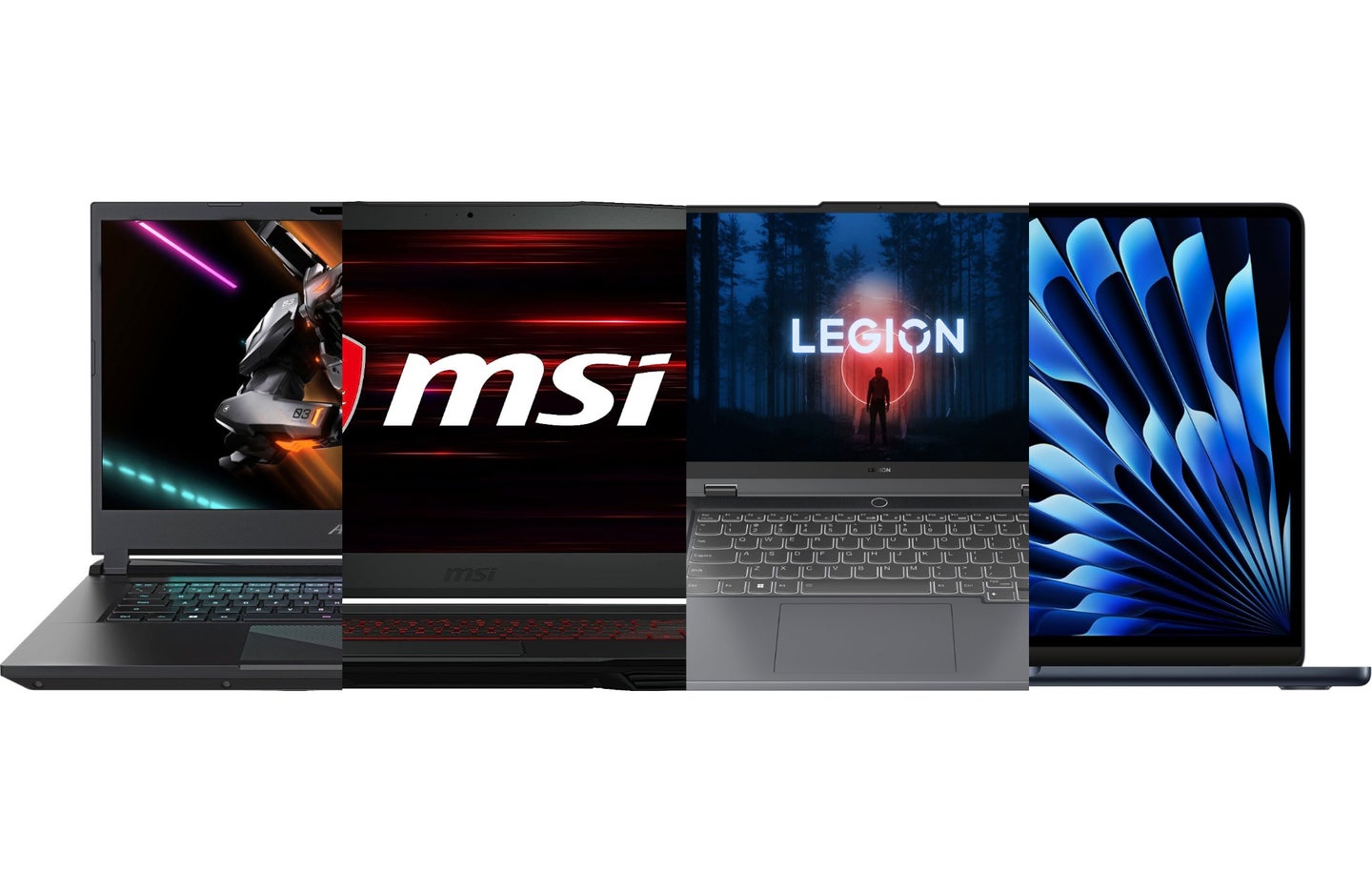
Brandt Ranj / Popular Science
Published Apr 12, 2024 4:00 PM EDT
These approachable laptops offer the best balance of performance, features, and price.
Best overall
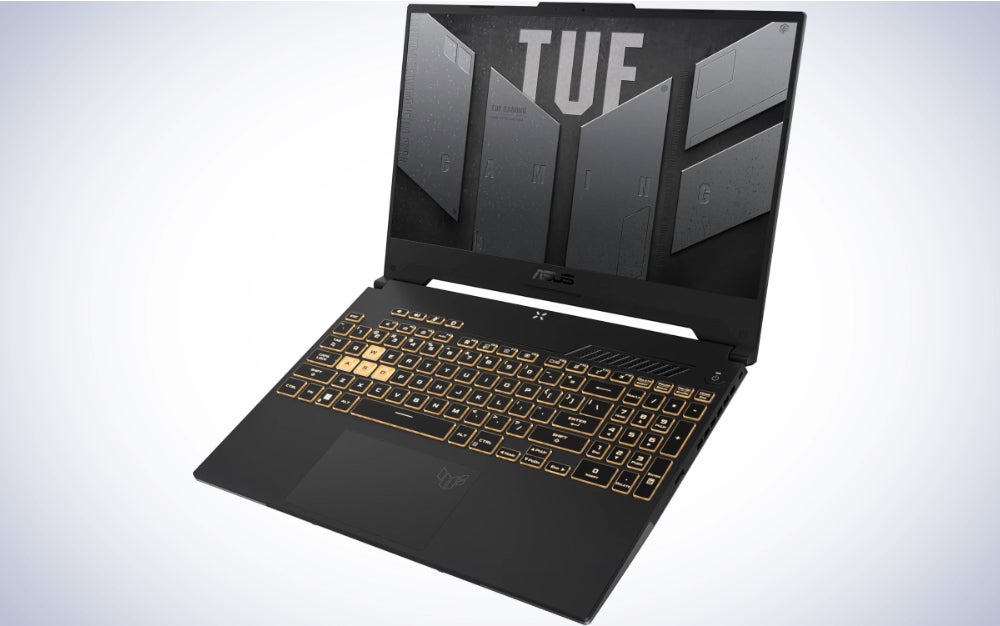
ASUS TUF Gaming F15
SEE IT
With an NVIDIA GeForce RTX 4050, 16GB of RAM, and an Intel Core i5 under the hood, you’ll be all set for smooth HD PC gaming on the go.
Best Mac
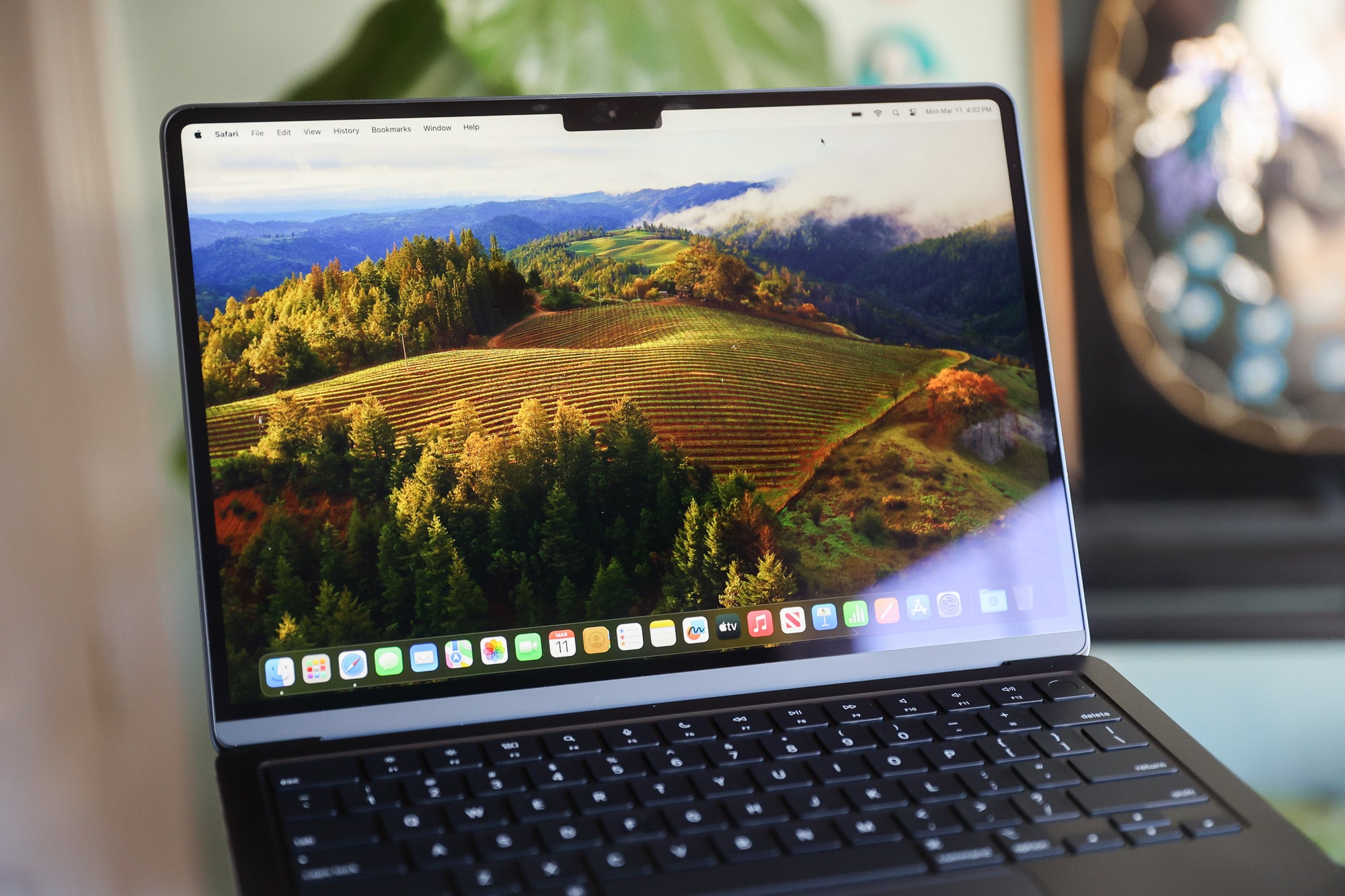
MacBook Air M3
SEE IT
Apple’s latest ultra-light laptop is a competent gaming machine—if you want to play titles that have been ported for MacOS.
Best budget
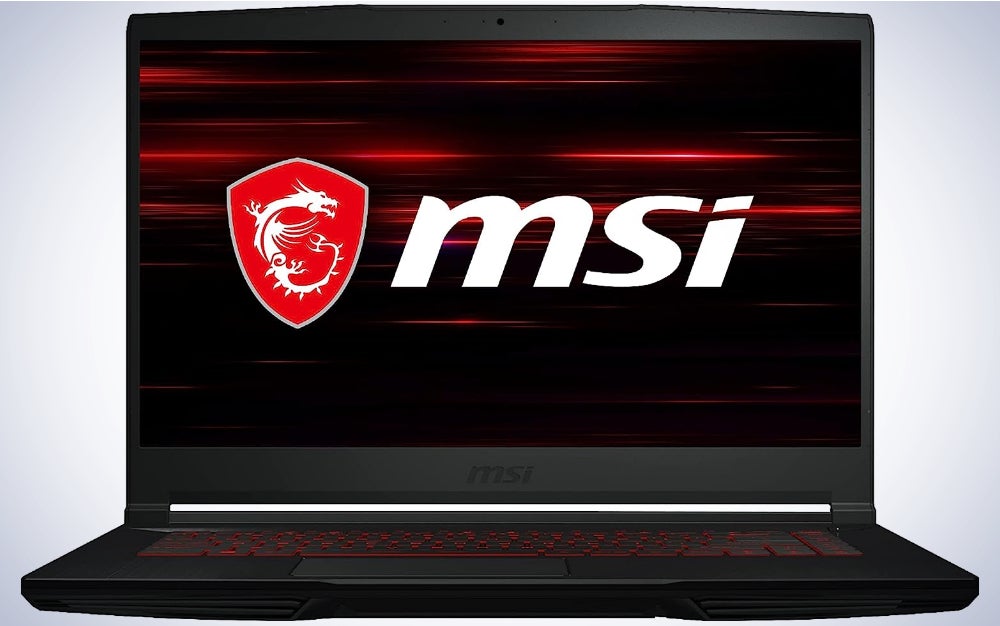
MSI GF63 Thin
SEE IT
MSI’s ultra budget-friendly gaming laptop is equipped with an ultra high refresh rate display and surprisingly good specs.
Published Apr 12, 2024 4:00 PM
We may earn revenue from the products available on this page and participate in affiliate programs. Learn more ›
In an ideal world, we’d all have enough money to buy the most expensive, top-of-the-line gaming laptops. These machines boast the most powerful processors and graphics cards, churning out silky smooth frame rates and breathtaking visuals for games like Baldur’s Gate 3, Helldivers 2, and Call of Duty: Warzone. Who wouldn’t want one? Unfortunately, the reality is many of us are on a budget. That’s where sub-$1,000 gaming laptops come in. They may not be able to crank the settings to the max on every title, but these budget gaming laptops can still play the latest games at decent settings and are affordable. The good news is that there are many options. These are the best gaming laptops under $1,000 and what to consider before purchasing.
Best overall: ASUS TUF Gaming F15
Best design: Lenovo Legion Slim 5
Best battery life: Gigabyte Aorus 15
Best Mac: MacBook Air M3
Best budget: MSI GF63 Thin
How we chose the best gaming laptops under $1,000
I’ve been gaming on PC since I was a kid (when DOS titles were still a thing) and have written about laptops for gaming and productivity for over a decade on sites like Popular Science, Best Products, and Esquire. During that time, I’ve tested everything from desktops and peripherals to monitors, USB microphones, and gaming mice. To find the best gaming laptops under $1,000, I tapped into previous Popular Science coverage and researched models across the major retail sites. I then analyzed user and expert reviews before finalizing the best picks in each product category.
The best gaming laptops under $1,000: Reviews & Recommendations
Gaming laptops under $1,000 generally prioritize affordability over cutting-edge performance, but you can still play most titles with settings that will provide a smooth, stutter-free experience. These good gaming laptops are great for casual gamers or those looking to get into PC gaming without breaking the bank. And that extra money you saved? You can put it toward other essentials, like a comfortable chair, an external monitor, or new gaming headphones.
There are so many different configurations out there that some of the options may be just above the $1,000 threshold. It may also be worthwhile to look at older flagship models, allowing you to save while still benefiting from great (albeit slightly outdated) specs. As you look through our picks, weigh the features we highlight, like CPU, GPU, RAM, display, storage, and battery life.
Best overall: ASUS TUF Gaming F15
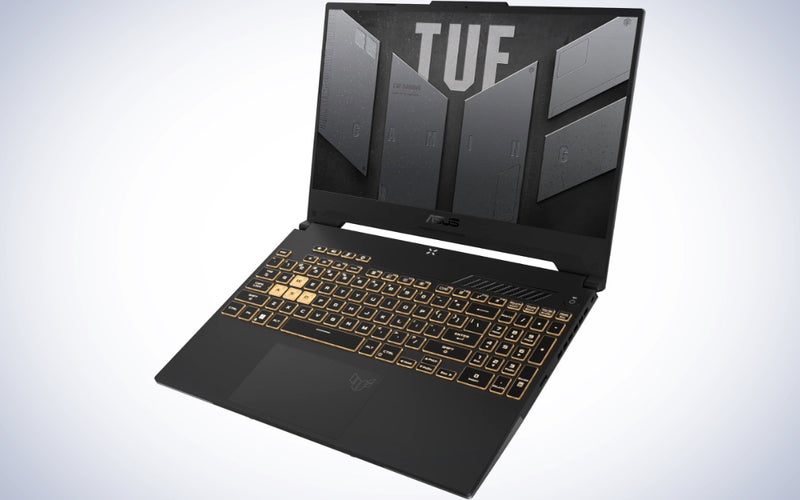
Specs
Processor: Intel Core i5-13500H
GPU: Nvidia GeForce RTX 4050
RAM: 16GB
Storage: 512GB SSD
Display: 15.6-inch FHD, 144Hz
Dimensions: 13.94 x 9.88 x 0.98 inches (WDH)
Weight: 4.85 pounds
Connectivity: HDMI 2.1, 2x USB 3.2 Gen 1 Type-A, USB 3.2 Gen 2 Type-C, Ethernet, Thunderbolt 4, 3.5mm headphone jack
Pros
Excellent battery life
Powerful performance
Strong, durable design
Cons
Heavy
The ASUS TUF Gaming F15 ticks all the right boxes, offering a great balance of performance, battery life, and more. It features a 15.6-inch 1080p display with a refresh rate of 144Hz. Under the hood, it offers an Intel Core i5 processor with four performance cores and eight efficiency cores. The max turbo boost clock speed is 4.7GHz, giving you plenty of power for everyday tasks and gaming.
Meanwhile, the laptop has an Nvidia GeForce RTX 4050 graphics card, making it capable of running even the latest games in 1080p at moderate settings. You also get 16GB of RAM for fast multitasking and a 512GB SSD to keep load times to a minimum. The 15.6-inch display offers a 144Hz refresh rate with 100% sRGB color for exceptional visuals. It also supports adaptive sync technology for smooth and tear-free gameplay.
Everything is packed into a design that meets the military-grade MIL-STD-810H standards for durability. To sweeten the deal, the ASUS TUF Gaming F15 comes with a free 3-month Xbox Game Pass Ultimate subscription, so you can start streaming your favorite games right away. All in all, the laptop is a solid pick that gives you a lot at an affordable price.
Best design: Lenovo Legion Slim 5
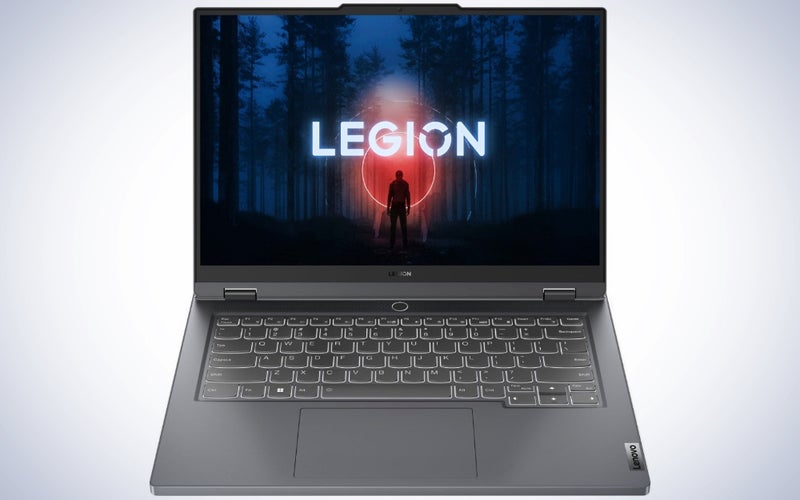
Specs
Processor: Ryzen 7 7840HS
GPU: Nvidia GeForce RTX 4060
RAM: 16GB
Storage: 1TB
Display: 14.5 OLED, 120Hz
Dimensions: 12.89 x 9.87 x 0.84 (WDH)
Weight: 3.85 pounds
Connectivity: HDMI 2.1, DisplayPort, 2x USB-C 3.2, 2x USB-A 3.2, 4-in-1 SD card reader, 3.5mm headphone jack
Pros
Beautiful OLED display
Sleek, portable design
Ample ports
Cons
So-so battery life
A good design can elevate a product and enhance the overall user experience. Case in point: The Lenovo Legion Slim 5 features a sleek flat-edge design that looks incredibly modern and worthy as our best splurge. The good news is it’s still relatively affordable (although just outside the $1,000 threshold). And it still offers decent specs that will provide you with an excellent gaming experience.
It features a 14.5-inch 120Hz OLED display, perfect for experiencing games with vibrant colors and smooth visuals. Under the hood, a Ryzen 7 7840HS processor and an Nvidia GeForce RTX 4060 GPU deliver a high-end gaming experience. The laptop also utilizes a cutting-edge cooling system that combines phase-change thermal compounds, hybrid copper heat pipes, and a 12V dual liquid crystal polymer fan. The combination works together to dissipate heat and minimize fan noise, so your laptop stays quiet when things get intense.
It’s worth noting that this particular Lenovo model may not fit under our $1,000 criteria at all times throughout the year. That said, if you see it on sale (and we have seen it discounted regularly), we suggest picking it up if you want a premium design.
Best for battery life: Gigabyte Aorus 15
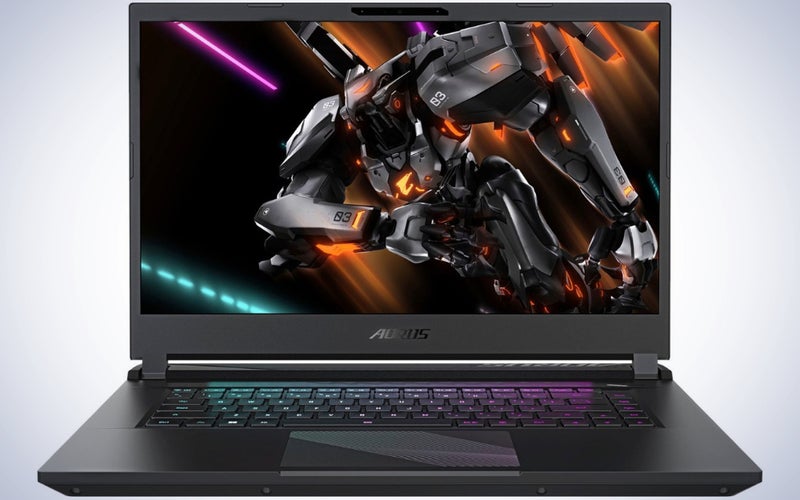
Specs
Processor: Intel Core i5-13500H
GPU: Nvidia GeForce RTX 4050
RAM: 8GB
Storage: 512GB
Display: 15.6 144Hz FHD
Dimensions: 14.2 x 10.7 x 0.82 (WDH)
Weight: 5 pounds
Connectivity: HDMI 2.1, Thunderbolt 4, 3x USB-A 3.1, USB-C 3.2
Pros
Excellent battery life
Upgradeable
Great performance
Cons
8GB of RAM standard
It’s no secret that gaming laptops prioritize performance over extended battery life. Even high-end models struggle to last a full workday while running demanding games. The Gigabyte Auros 15 stands out by offering a good balance between performance and battery life. You can expect to enjoy several hours of gameplay at medium or high settings without needing to be tethered to an outlet. The laptop also features a well-designed cooling system that keeps thermals in check without overly loud fan noise, ensuring a comfortable gaming experience.
This configuration packs a punch with a 15.6-inch 144Hz FHD display for smooth visuals, an Intel i5-13500H processor, and an Nvidia GeForce RTX 4050 GPU. You also get 512GB of storage to house your favorite games. While it comes with only 8GB of RAM—enough to run today’s games—it might not be ideal for future-proofing or heavy multitasking. The good news is that you can easily upgrade the RAM to 16GB for a relatively small cost, making this laptop a great long-term investment.
Best Mac: MacBook Air M3
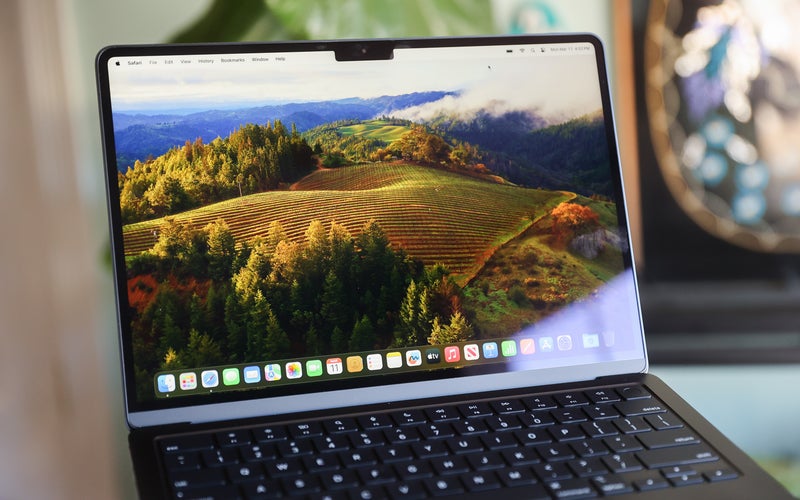
Specs
Processor: M3
RAM: 8GB
Storage: 256GB
Display: 13-inch (2560×1664), 60Hz
Dimensions: 11.97 x 8.46 x 0.44 (WDH)
Weight: 2.7 pounds
Connectivity: MagSafe 3, 2x Thunderbolt 4, 3.5mm headphone jack
Pros
Excellent battery life
Slim, lightweight design
Excellent performance
Cons
8GB of RAM standard
While Apple computers haven’t traditionally been known for gaming, the latest MacBook Air with the M3 chip is surprisingly adept at handling casual gaming. The M3 chip offers a significant performance boost, making it suitable for playing older titles like Shadow of the Tomb Raider and Death Stranding. It’s important to note that achieving the smoothest gameplay will likely require adjusting graphics settings to medium or lower. That being said, for users who enjoy occasional gaming sessions and prioritize tasks like photo and video editing, the new MacBook Air presents a compelling option.
The base model MacBook Air comes equipped with an M3 chip, 256GB of storage, and 8GB of RAM. While 8GB is sufficient for many tasks, it might not be ideal for long-term use, especially if you plan on multitasking heavily or running demanding apps. Unlike some other laptops, Apple doesn’t allow component upgrades after purchase, so you’re stuck with your choice. However, the MacBook Air with M3 chip is still a great choice for casual gamers who don’t want to step up to Apple’s Pro-level MacBooks. You’ll just need to be aware that the selection of compatible games may be somewhat limited, and you might need to adjust settings to achieve optimal performance.
Best budget: MSI GF63 Thin
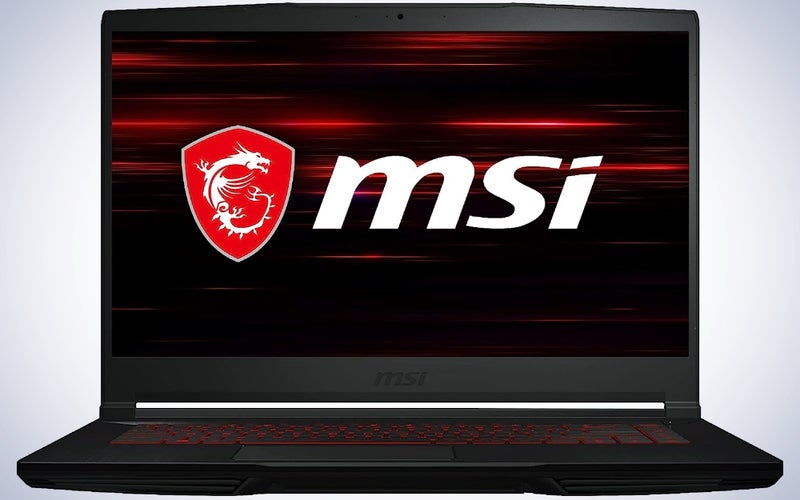
Specs
Processor: Intel Core i5-11400H
GPU: Nvidia GeForce RTX 3050
RAM: 16GB
Storage: 512GB
Display: 15.6-inch Full HD, 144Hz
Dimensions: 14.13 x 9.99 x 0.85 inches (WDH)
Weight: 4.1 pounds
Connectivity: HDMI, USB-C 3.2, 2x USB-A 3.2, 3.5mm headphone jack, Ethernet
Pros
Thin, lightweight design
1TB of storage
Great battery life
Cons
Underpowered GPU
If you’re looking for a balance between affordability and performance, the MSI GF63 Thin is the perfect solution for gamers on a budget. It costs a few hundred dollars under $1,000 but still offers an excellent gaming experience, thanks to its Intel Core i5-12450H processor, GeForce RTX 2050, and 1TB of storage. Sure, it’s not quite enough to play the latest AAA titles at max settings, but it will still perform well and definitely beats out an ultra-budget choice under $500.
Of course, there are trade-offs to consider at this price point. This particular configuration of the MSI GF63 Thin hit the scene in 2022, so it features some older specs. That said, it can still play the latest titles, but you will have to play them at lower settings. This means it may not offer the same future-proofing as newer laptops with the latest hardware, but it remains a compelling option for budget-minded gamers who prioritize affordability over cutting-edge performance.
What to consider when buying a gaming laptop under $1,000
Like we said, the market for affordable gaming laptops is vast, with some options well under the $1,000 threshold. It’s worth noting that there are also many excellent gaming laptops for just a few hundred dollars over $1,000 if your budget can stretch a bit further. These might offer more powerful components or higher-quality displays. Whether you’re a casual gamer who plays occasionally or someone who craves the latest titles with the highest settings, here’s what to look for in the best gaming laptops under $1,000.
Processor
The Central Processing Unit (CPU) is the brain of your gaming laptop, handling everything from running the operating system to complex in-game calculations. When searching for a gaming laptop under $1,000, the two main CPU contenders are Intel and AMD. Look for processors like the Intel Core i5 or i7 or AMD Ryzen 5. These processors typically have at least four cores and eight threads, offering a good balance for performance in this price range.
Graphics
The Graphics Processing Unit (GPU) is an essential component and directly affects how well your laptop runs games. At this price point, it’s important to set your expectations. Luckily, top-of-the-line options aren’t necessary for decent performance. These laptops prioritize smooth gameplay with features like high refresh rate displays, so expect to play most current games at 1080p resolution with medium to high settings. For example, the GTX 1650 is a budget-friendly option that handles 1080p gaming well. However, expect slightly lower frame rates on newer games. The key is finding a balance between visuals and frame rates for the most enjoyable gameplay experience.
Memory
Even for sub-$1,000, we recommend 16GB of RAM whenever possible. Think of RAM like your laptop’s short-term memory—it temporarily stores data and accesses it again if necessary. While you can save money upfront with 8GB of RAM, you might run into performance limitations down the line, especially with newer games. Upgrading RAM after the fact is possible in some laptops, but others use soldered RAM, meaning it’s permanently attached to the motherboard and cannot be replaced. For a smoother gaming experience and future-proofing, investing in 16GB of RAM is a wise choice.
Display
Ideally, you want a display that strikes a balance between size, resolution, and refresh rate. The sweet spot for size and resolution is 15 inches and Full HD (1080p), respectively. Full HD is widely supported by games, offers good pixel density for 15-inch screens, and helps maintain strong frame rates. While higher resolutions like 1440p are tempting, they can strain the GPU and lead to sluggish gameplay. Meanwhile, a higher refresh rate like 144Hz is especially important in fast-paced games, providing smoother visuals while reducing motion blur. Of course, if you plan on spending more time gaming at a desk, you can always connect an external gaming monitor.
Storage
Today’s games are larger than ever, making storage space a critical part of your setup. You should aim for at least 512GB of storage. This will provide enough space to store three to five AAA titles, along with your operating system and other applications. Meanwhile, solid-state drives (SDD) are a must-have for a smooth gaming experience. Compared to traditional hard drives (HDDs), SSDs significantly reduce game load times and make your entire system feel faster and more responsive. Some laptops will offer a combination of storage options. They might have a smaller, faster SSD for the OS and key games, and a larger, slower HDD for additional storage. You can also add external storage later with the best portable SSDs.
Battery life
Gaming laptops offer the freedom to play anywhere, but battery life can limit that freedom. The reality is, gaming laptops prioritize performance over battery efficiency. Even the most expensive models won’t last a full day of intense use. In general, you want to ensure you’re near an outlet for serious gaming sessions, as you’ll likely only get 4-6 hours of battery life depending on the game and settings.
FAQs
Q: How long does a $1,000 gaming laptop last?
Even with mid-range components, a gaming laptop under $1,000 should last 3-5 years with moderate use and proper care. Of course, your mileage may vary. While multiple factors determine its lifespan, two primary considerations are most important. Laptops boasting newer components, like faster processors, ample RAM, and more powerful graphics cards, will theoretically last longer.
However, your gaming habits also play a role. Regularly pushing your laptop to its limits by playing the latest games at high settings for extended periods can lead to faster wear and tear. Fortunately, there are ways to maximize your laptop’s longevity. Keeping your software up-to-date, including the operating system, drivers, and games, optimizes performance, security, and even how your hardware runs certain tasks.
By understanding these factors, you can better choose how to use your computer best and extend its life.
Q: How much RAM do I need for gaming?
It really depends on the types of games you play, your multitasking needs, and how long you plan to keep your gaming laptop. For light gaming at low or medium settings, 8GB of RAM should be sufficient. However, for a smoother experience, especially with newer titles, 16GB is quickly becoming the new standard and the amount we recommend. That said, if you’re a heavy multitasker who wants to push their machine, then 32GB of RAM is the minimum you want to aim for, as this will provide the most headroom for demanding tasks.
Q: What are the minimum laptop requirements for gaming?
For a good starting point for casual gamers, consider aiming for an Intel Core i5 processor, 8GB of RAM, an Nvidia GeForce RTX 3050 or AMD Radeon RX 6600 graphics card, and at least 256GB of storage. This setup will allow you to play most modern games at playable frame rates with moderate graphics settings. The easiest way to determine if your laptop will be able to handle a game you want to play is to check its minimum requirements set by the developer. As games get bigger and become more visually impressive, the hardware needed to run them smoothly also increases. This means a computer that barely meets the minimum requirements for today’s games might struggle to play new releases just a year or so down the line.
Final thoughts on the best gaming laptops under $1,000
Best overall: ASUS TUF Gaming F15
Best design: Lenovo Legion Slim 5
Best battery life: Gigabyte Aorus 15
Best Mac: MacBook Air M3
Best budget: MSI GF63 Thin
Finding good laptops for gaming under $1,000 is a balancing act, and even some of our recommendations here push that limit slightly. This highlights the challenge of getting a future-proof machine while staying in the realm of affordability. However, compromises are unavoidable at this budget, from an underpowered processor to an older GPU or limited RAM. On your search, prioritize what matters most to you. Consider factors like battery life for everyday use and performance for gaming. Ultimately, for most budget-minded gamers, focusing on the processor and graphics card will deliver the smoothest and most visually impressive gaming experience.
Why trust us
Popular Science started writing about technology more than 150 years ago. There was no such thing as “gadget writing” when we published our first issue in 1872, but if there was, our mission to demystify the world of innovation for everyday readers means we would have been all over it. Here in the present, PopSci is fully committed to helping readers navigate the increasingly intimidating array of devices on the market right now.
Our writers and editors have combined decades of experience covering and reviewing consumer electronics. We each have our own obsessive specialties—from high-end audio to video games to cameras and beyond—but when we’re reviewing devices outside of our immediate wheelhouses, we do our best to seek out trustworthy voices and opinions to help guide people to the very best recommendations. We know we don’t know everything, but we’re excited to live through the analysis paralysis that internet shopping can spur so readers don’t have to.
>>> Read full article>>>
Copyright for syndicated content belongs to the linked Source : Popular Science – https://www.popsci.com/gear/best-gaming-laptops-under-1000/































